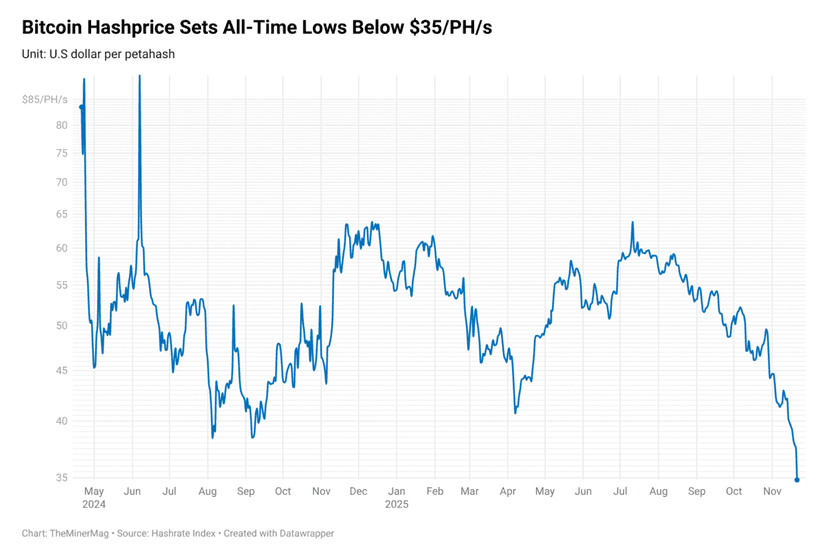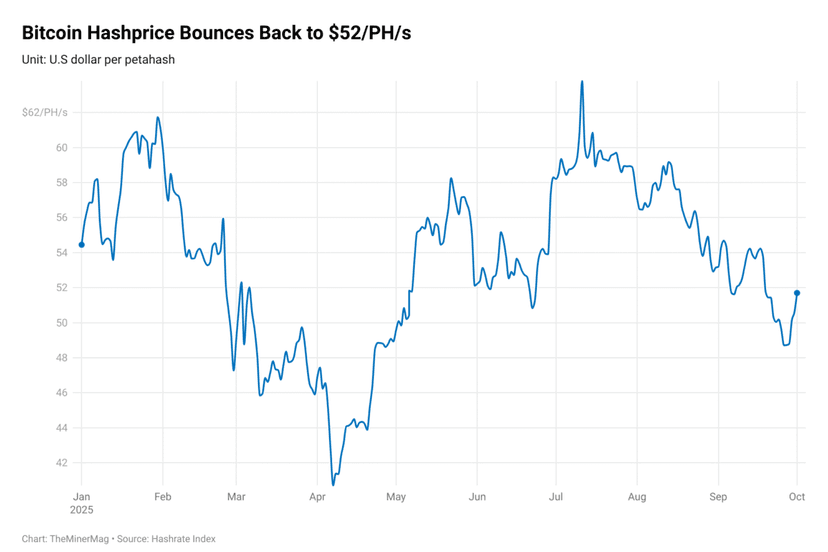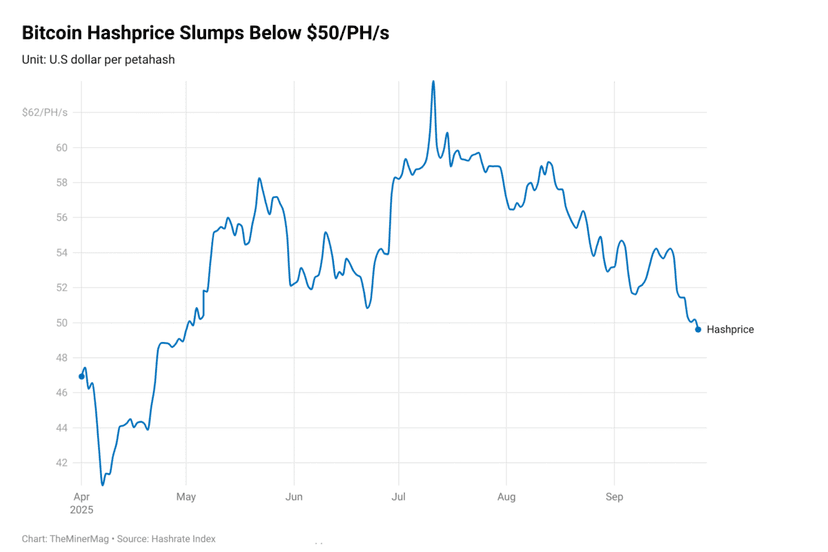Bitcoin’s Mining Difficulty Hits Record High, Erasing Recent Hashprice Gains

Bitcoin’s mining difficulty reached a new all-time high of 126.98 trillion over the weekend, reflecting a 4.38% increase and erasing much of the hashprice gains accumulated since early May.
According to network data, Bitcoin’s difficulty adjusted to this new high on Saturday, following a 14-day average hashrate record of 913.54 EH/s—just about 10% shy of breaking the zetahash milestone. These developments highlight the intensifying competition among miners as the network becomes increasingly challenging and rewards become thinner amid fluctuating market conditions.
Following the difficulty adjustment, Bitcoin’s hashprice—a measure of mining revenue per unit of hashrate—fell to $52 per PH/s, wiping out much of the gains seen since early May. The hashprice had briefly spiked to $58 per PH/s on May 23 when Bitcoin’s price surged to an all-time high of $112,000, but has since stabilized around $100,000.
Despite the surging network hashrate, Bitcoin transaction fees have remained low, comprising just 1.3% of total block rewards in May. The increase in network hashrate has been fueled by public mining companies expanding and energizing their capacity in recent weeks.
HIVE Digital announced crossing the 7 EH/s mark in early May and ramped up capacity to over 10 EH/s last week. The company is expected to report a significant increase in its May Bitcoin production. As previously reported, HIVE aims to reach 11.5 EH/s by the end of June and 18 EH/s by the end of Q3.
MARA also set a new record, with its proprietary mining pool producing 888.1 BTC in May—about 6% of total Bitcoin mined. MARA’s realized hashrate from this pool reached nearly 55 EH/s, marking a 23% increase from the previous month, excluding contributions from its overseas joint ventures.






